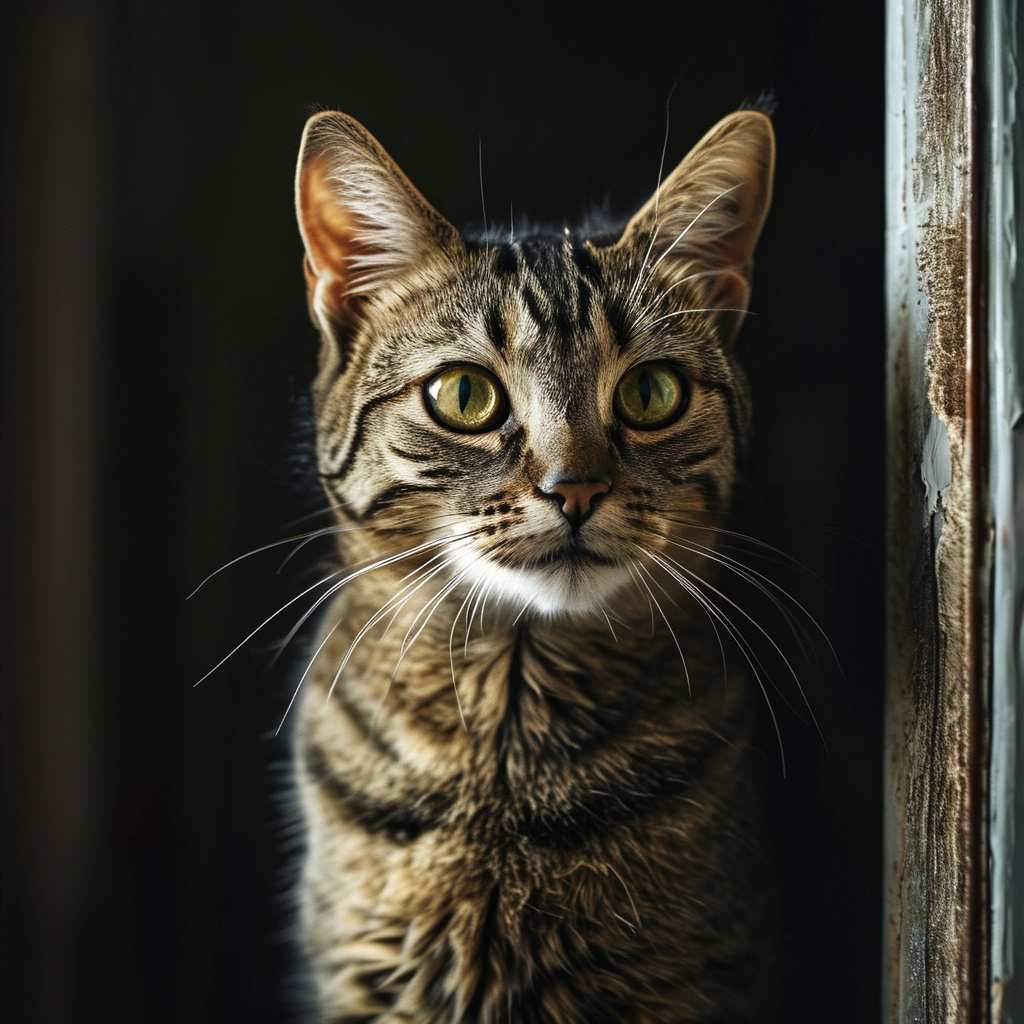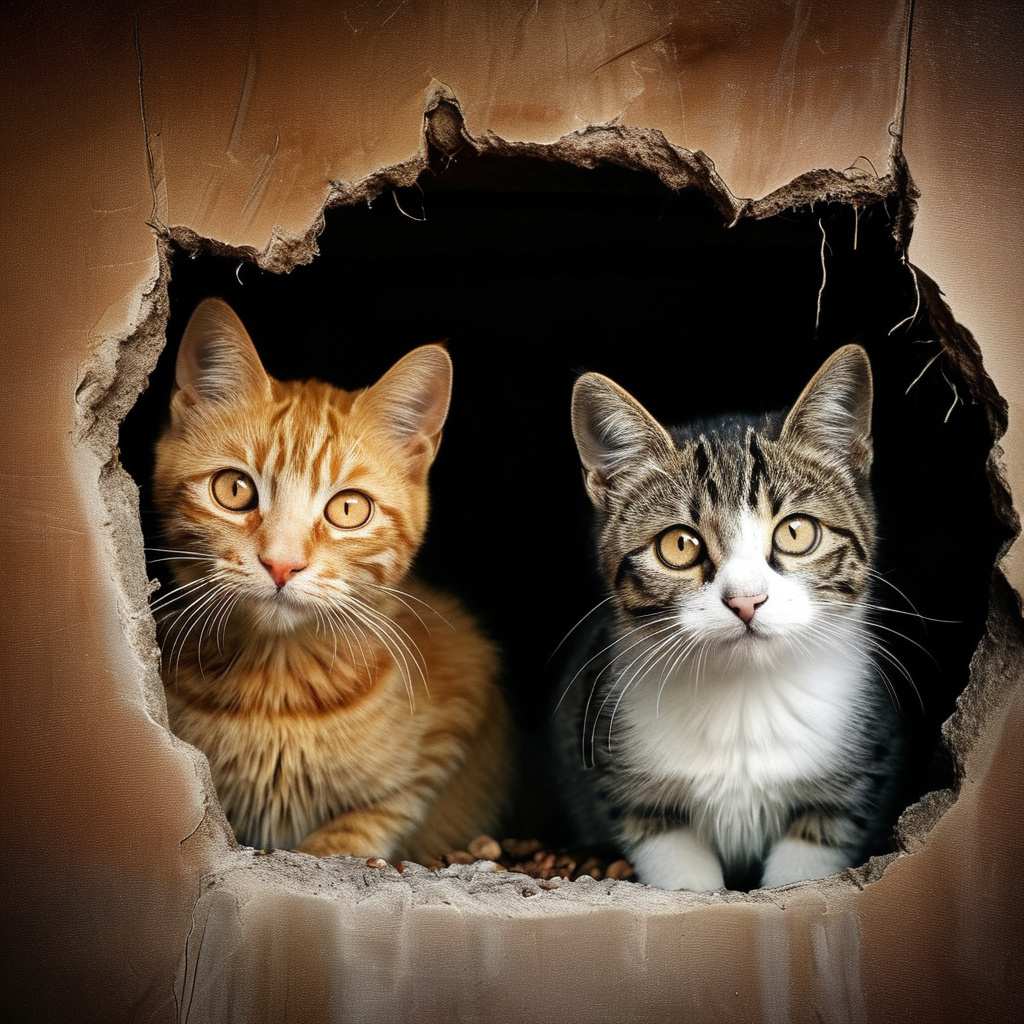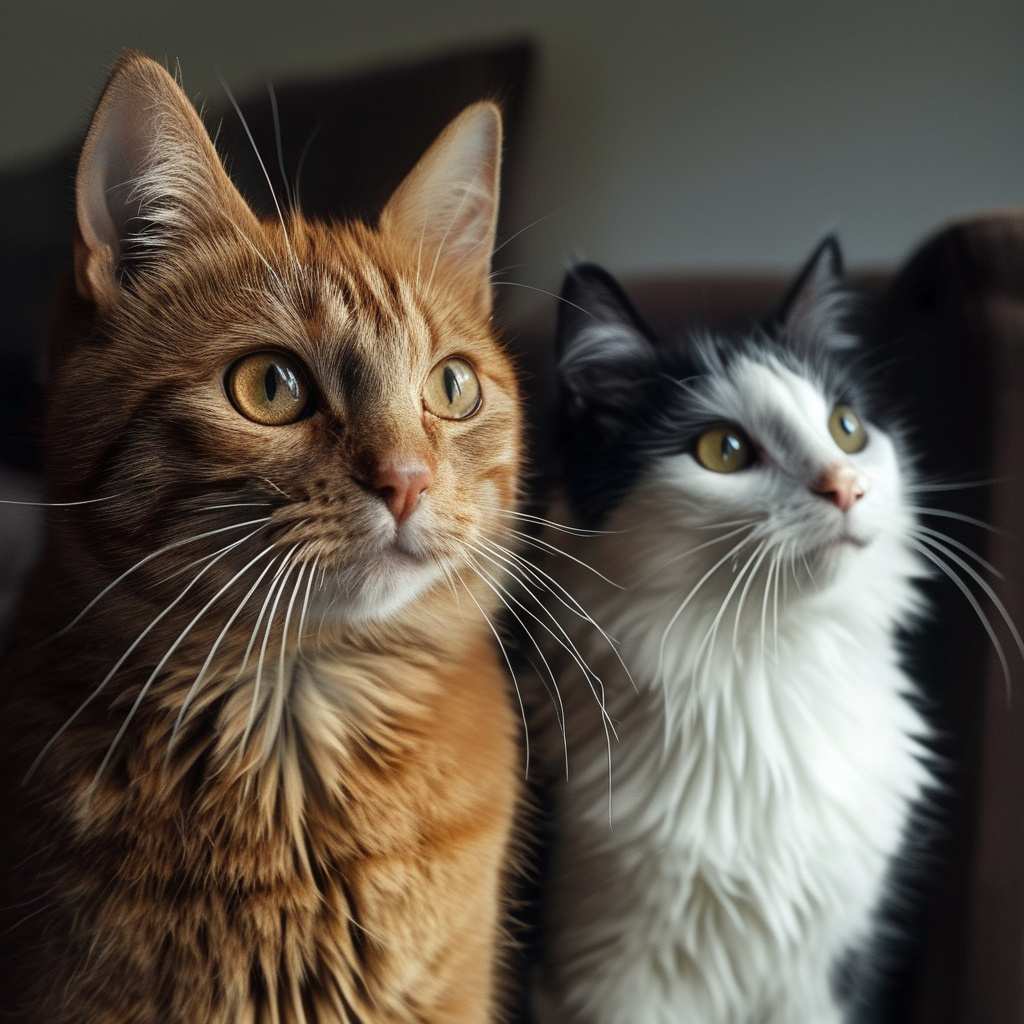Introduction:
Cats are naturally curious and independent creatures, often hiding in unexpected places. While this behavior can be part of their playful, instinctive hunting routine, it may also signal that something is amiss. As responsible cat carers, it’s crucial to differentiate between normal hiding habits, like during play or rest, and signs of discomfort or illness. Understanding the hunting cycle and recognizing unusual behaviors, such as excessive hiding or changes in appetite and demeanor, can help ensure our feline friends stay happy and healthy.
 It’s not uncommon for cat carers to notice that their cat is not at home. It might be a bit of fun, but it can also be a cause for concern. So, what does it mean when your cat hides?
It’s not uncommon for cat carers to notice that their cat is not at home. It might be a bit of fun, but it can also be a cause for concern. So, what does it mean when your cat hides?
Related Post: The Majestic Maine Coon: The Giant with a Gentle Soul
To talk about this, it’s helpful to look at some of the ways cats behave. It’s important to remember that hunting is a natural instinct for cats, and it’s how they play. Even though a cat doesn’t need to hunt to get the nutrients it needs, hunting is still something that cats do for its own sake. You can test this out by playing a simulated hunt.
What is a hunting cycle, and how can we introduce our cats to it?
The hunting cycle can be broken down into a few different phases. First, the cat looks around and watches for a potential victim. Toy rods and plush mice on a string are great for use at home. It’s best if the object moves away from the cat or disappears around a corner. It gets the cat’s senses going and makes it ready to attack. While the cat is getting ready, it can slowly approach the object, stop, and move again. It can hide behind furniture or take a position that shows it’s ready to jump. When the cat is ready to attack, don’t give it the prey right away. Let it “fight” for a while instead.
Related Post: Choosing the Best Dog Treats: A Guide to Healthy, Natural Options for Your Pet
 Ultimately, in the wild, prey doesn’t give up right away. The goal is to recreate the natural hunting cycle. As soon as the toy is caught and secured, the cat will start playing with it, for example, biting, kicking, and throwing. It’s totally normal behaviour. Once that’s done, it’s a good idea to feed your cat so she can go to the toilet and then find a nice quiet spot to rest.
Ultimately, in the wild, prey doesn’t give up right away. The goal is to recreate the natural hunting cycle. As soon as the toy is caught and secured, the cat will start playing with it, for example, biting, kicking, and throwing. It’s totally normal behaviour. Once that’s done, it’s a good idea to feed your cat so she can go to the toilet and then find a nice quiet spot to rest.
How cats go about this sparsely discussed hunting cycle can vary depending on their temperament, exercise needs, activity level, and toy selection. One cat might like a fishing rod, while another might not be that into it. While the cat is playing, it might hide behind furniture, in a cat house, or in a cardboard box, if there are any available. This is normal behaviour, and it should make the caregiver happy.
Related Post: The Loyal and Lively West Highland White Terrier: A Playful Companion with a Strong Personality
 So, when should you start to worry about your cat hiding?
So, when should you start to worry about your cat hiding?
It might surprise you to know that your cat hiding could be a sign that they’re not feeling well or are uncomfortable.
It’s not typical for cats to show signs of discomfort. As long as their illness can be hidden, they’ll act as normal. However, a pet owner who keeps an eye on their cat will probably notice if something’s not right. If you’re a caring and attentive caregiver, you can often tell just by looking at a cat if they’re sad or suffering. Cats may hide in various places and avoid contact with people or other animals because they’re not shy about showing weakness or a deterioration in their condition and well-being. If your cat is spending a lot of time hiding under the bed, in the closet, or in high places like cupboards, it could be a sign that something is wrong.
Related Post: The Meaning Behind a Cat’s Meow: Understanding Feline Communication
On top of that, there are other symptoms that we should keep an eye on. The main things to look out for are:
Apathy, loss of appetite, and avoiding human contact are all signs that something might be wrong. You might also notice aggression when trying to groom the cat or when trying to catch it.
 Normally, animals that would happily come when called to get food from a can now don’t respond at all. It’s also worth noting that cats in pain may start purring, so this shouldn’t necessarily be seen as a positive sign. If you notice any of these symptoms, it’s important to take your cat to the vet right away. If your cat is acting differently, it could be a sign of something serious, so it’s important to get them checked out as soon as possible.
Normally, animals that would happily come when called to get food from a can now don’t respond at all. It’s also worth noting that cats in pain may start purring, so this shouldn’t necessarily be seen as a positive sign. If you notice any of these symptoms, it’s important to take your cat to the vet right away. If your cat is acting differently, it could be a sign of something serious, so it’s important to get them checked out as soon as possible.
Cats are fascinating creatures, and learning about their habits and behaviour is both challenging and rewarding for anyone who cares for them. No two cats are exactly alike. Cat owners who take responsibility for their cats should keep a close eye on them and try to make sure they’re doing well and notice any changes in behaviour. This will give your cat a better chance of bouncing back and staying healthy if they do get sick.
Conclusion:
Recognizing the difference between playful and concerning cat behavior is essential for any responsible cat owner. While hiding is part of a cat’s natural instinct, especially during play, it can also indicate stress or illness. By paying close attention to their habits and addressing any signs of distress early, you can help your cat stay well. Regular vet visits, combined with an understanding of your pet’s unique personality and routine, are key to maintaining their health and happiness.
FAQs:
- Why do cats hide during play? Cats hide during play as part of their natural hunting instincts. They enjoy stalking, pouncing, and attacking “prey,” and hiding helps mimic their wild behavior.
- Is it normal for my cat to hide often? Frequent hiding can be normal during play or rest, but if your cat is hiding excessively, it may indicate stress, discomfort, or illness.
- When should I be worried about my cat hiding? If your cat is hiding more than usual, avoiding contact, losing appetite, or showing aggression, it’s time to consult a vet as these could be signs of illness.
- How can I encourage my cat’s natural hunting instincts at home? You can simulate a hunting experience with toys like fishing rods, plush mice, or anything that allows your cat to stalk, pounce, and “catch” its prey.
- Why does my cat hide in high places? Cats often feel safe in elevated or hidden spots. However, if they are consistently isolating themselves, it could be a sign of discomfort or stress.
- Can purring indicate that my cat is in pain? Yes, purring can sometimes be a sign of pain, so it shouldn’t always be interpreted as a sign of contentment, especially if accompanied by unusual behavior.
- What are the common signs of illness in cats? Apathy, loss of appetite, hiding, and avoiding human contact are common signs that your cat may not be feeling well and should be taken to a vet.
References:
